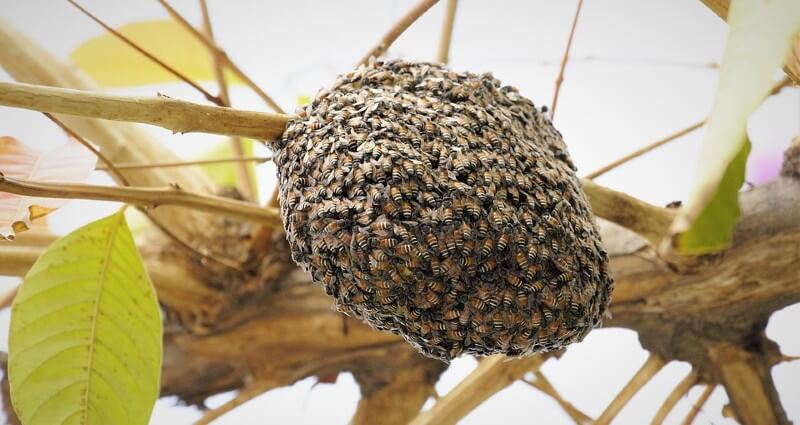Bees play a vital role in pollination and biodiversity, but when they establish colonies in residential areas, they can pose a risk to people and property. Reacting with fear or trying to remove a hive without expert help can make the situation worse. Instead of eradication, the goal should be safe and humane bee relocation. This not only preserves the ecosystem but ensures a safer outcome for homeowners. Understanding how bee relocation works and why it should always be handled by trained professionals can make a significant difference for your home and the environment.

Why Bees Choose Residential Areas
Bees are constantly looking for new nesting sites, and human structures often provide everything they need to survive. Wall voids, attics, chimneys, and sheds offer warmth, shelter, and protection from predators. Gardens with flowers, water features, and well-maintained landscaping only increase the appeal.
Once bees find an ideal spot, the colony can expand quickly. What starts as a small swarm can grow into a fully active hive within a few weeks. These hives may not be immediately visible, especially when located within walls or under rooflines, but their presence can become dangerous when disturbed by noise, vibration, or routine home maintenance. Recognizing bees as beneficial but situationally hazardous is the first step toward choosing bee relocation over extermination.
The Risks of DIY Removal
While it may seem simple to spray or smoke out a beehive, attempting to remove bees without training or protective equipment is never advisable. Even a single misstep can provoke an aggressive response from the colony, leading to multiple stings and serious allergic reactions. Some bees, such as Africanized honey bees, are particularly defensive and may pursue threats for significant distances.
Beyond the risk of stings, improper removal often fails to address the hive itself. Removing surface bees without extracting the comb leaves behind wax, honey, and pheromones that continue to attract new colonies or other pests. Additionally, structural damage can occur when untrained individuals open walls or roofing to reach nests without understanding the proper method for repair or cleanup. These risks often outweigh any perceived savings from a DIY approach.
What Makes Professional Relocation Different
Professional bee relocation involves far more than moving bees from one place to another. It’s a specialized process that prioritizes both safety and sustainability. Trained technicians begin with an inspection to assess hive size, location, and bee behavior. Depending on the site, they may use thermal imaging or acoustic tools to locate hidden colonies. After identifying the hive, they carefully extract the entire colony, including the queen, comb, and brood.
Key components of professional bee relocation include:
- Safety protocols to protect both residents and technicians during removal
- Live extraction techniques that minimize harm to the bees
- Proper equipment, including bee vacuums and sealed transport containers
- Colony transfer to apiaries or suitable wild environments where bees can continue to thrive
- Full hive removal, including leftover honey and wax, to prevent reinfestation
In addition, technicians often perform minor structural repairs and sanitation to restore the affected area. The result is a humane solution that supports pollinator health while ensuring homeowner safety.
Environmental and Legal Considerations
With global concern for pollinator decline, many states have regulations in place to protect bees. In some regions, it’s even illegal to exterminate certain species without attempting relocation first. Responsible pest control now includes understanding local laws and ecological responsibilities.
Bees contribute significantly to plant pollination, including agricultural crops, native plants, and flowering trees. Their disappearance from an ecosystem can disrupt food chains and plant diversity. Choosing professional bee relocation ensures that hives are moved to safe environments where they continue their ecological role without conflict.
Public awareness of pest types and local guidelines can also help prevent misunderstandings. It’s easy to misidentify bees as other stinging insects, such as yellowjackets or wasps. Reviewing trusted resources ontypes of pests to be careful of can help homeowners make informed decisions before taking action.
What to Expect from a Bee Relocation Visit
Understanding the steps involved in a professional visit can help homeowners prepare and feel more at ease during the process. A trained technician will begin with a thorough inspection of the property, looking for bee activity, entry points, and structural impact. Once the colony is located, the technician will explain the relocation plan and take measures to ensure safety during extraction.
In most cases, the relocation is performed on the same day as the inspection. Depending on the location and size of the hive, it may take several hours. After the bees are removed, the technician will provide recommendations to prevent future nesting and may advise sealing up specific areas.
This process often mirrors what’s outlined in guides on what to expect during a professional pest control service visit, helping homeowners understand that expert help brings both structure and peace of mind.
Give Bees a Better Home and Keep Yours Safer
Bees are essential, but they don’t belong inside your walls or over your front door. Choosing bee relocation over removal supports biodiversity while keeping your home and family safe. With the right professionals, the process is efficient, humane, and environmentally responsible.To schedule a safe and effective bee relocation service, reach out to Clearview Pest Control for expert guidance and support.



